HONDA ACCORD HYBRID 2007 CL7 / 7.G Workshop Manual
Manufacturer: HONDA, Model Year: 2007, Model line: ACCORD HYBRID, Model: HONDA ACCORD HYBRID 2007 CL7 / 7.GPages: 287, PDF Size: 5.38 MB
Page 51 of 287
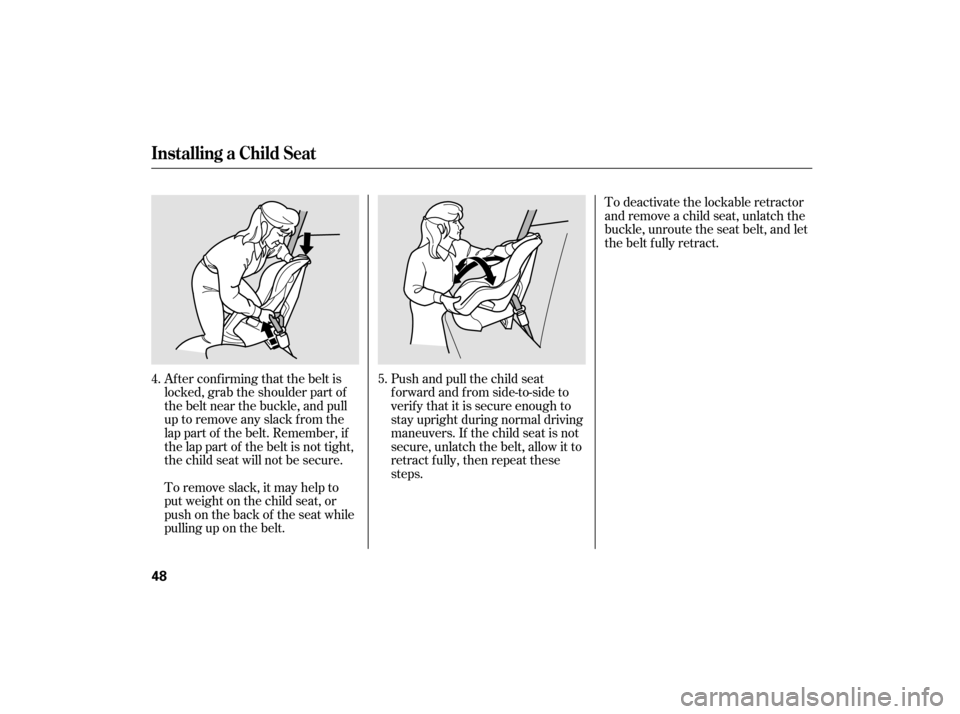
Af ter conf irming that the belt is
locked, grab the shoulder part of
the belt near the buckle, and pull
up to remove any slack from the
lap part of the belt. Remember, if
the lap part of the belt is not tight,
the child seat will not be secure.To deactivate the lockable retractor
andremoveachildseat,unlatchthe
buckle, unroute the seat belt, and let
the belt fully retract.
Push and pull the child seat
f orward and f rom side-to-side to
verify that it is secure enough to
stay upright during normal driving
maneuvers. If the child seat is not
secure, unlatch the belt, allow it to
retract f ully, then repeat these
steps.
To remove slack, it may help to
putweightonthechildseat,or
push on the back of the seat while
pulling up on the belt.
4. 5.
Installing a Child Seat
48
06/08/08 14:23:24 31SDR620_053
Page 52 of 287
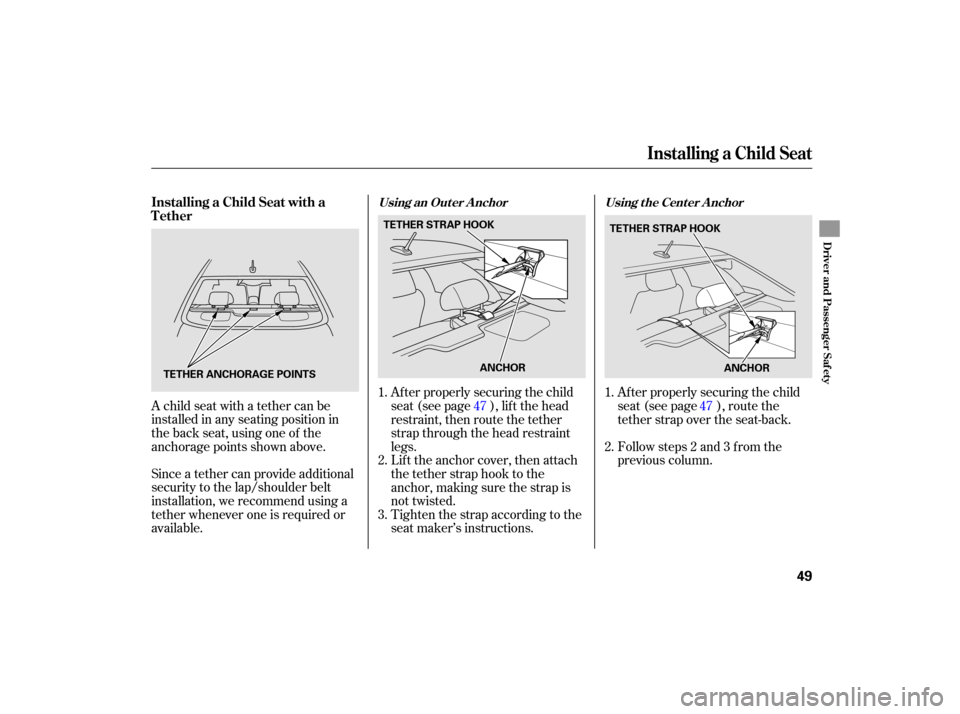
A child seat with a tether can be
installed in any seating position in
the back seat, using one of the
anchorage points shown above.
Since a tether can provide additional
security to the lap/shoulder belt
installation, we recommend using a
tether whenever one is required or
available.Tighten the strap according to the
seat maker’s instructions.Af ter properly securing the child
seat (see page ), route the
tether strap over the seat-back.
Follow steps 2 and 3 f rom the
previous column.
Lift the anchor cover, then attach
the tether strap hook to the
anchor, making sure the strap is
not twisted. Af ter properly securing the child
seat (see page ), lif t the head
restraint, then route the tether
strap through the head restraint
legs.
1.
2.
3. 1.
2.
47 47
Installing a Child Seat with a
Tether
Using an Out er A nchor
Using t he Cent er A nchor
Installing a Child Seat
Driver and Passenger Saf ety
49
TETHER STRAP HOOK
TETHER ANCHORAGE POINTS TETHER STRAP HOOK
ANCHOR ANCHOR
06/08/08 14:23:37 31SDR620_054
Page 53 of 287
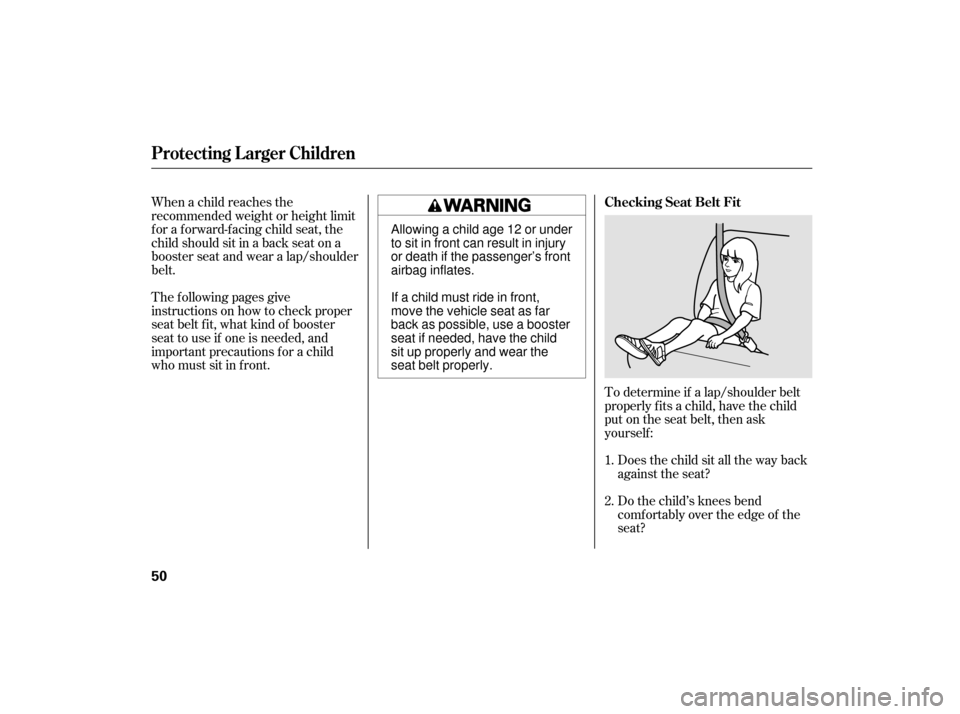
To determine if a lap/shoulder belt
properly f its a child, have the child
put on the seat belt, then ask
yourself :
When a child reaches the
recommended weight or height limit
for a forward-facing child seat, the
child should sit in a back seat on a
booster seat and wear a lap/shoulder
belt.
Does the child sit all the way back
against the seat?
Do the child’s knees bend
comf ortably over the edge of the
seat?
The f ollowing pages give
instructions on how to check proper
seat belt f it, what kind of booster
seat to use if one is needed, and
important precautions f or a child
who must sit in f ront.
1.
2. Checking Seat Belt Fit
Protecting L arger Children
50
Allowing a child age 12 or under
to sit in front can result in injury
or death if the passenger’s front
airbag inflates.
If a child must ride in front,
move the vehicle seat as far
back as possible, use a booster
seat if needed, have the child
sit up properly and wear the
seat belt properly.
06/08/08 14:23:46 31SDR620_055
Page 54 of 287
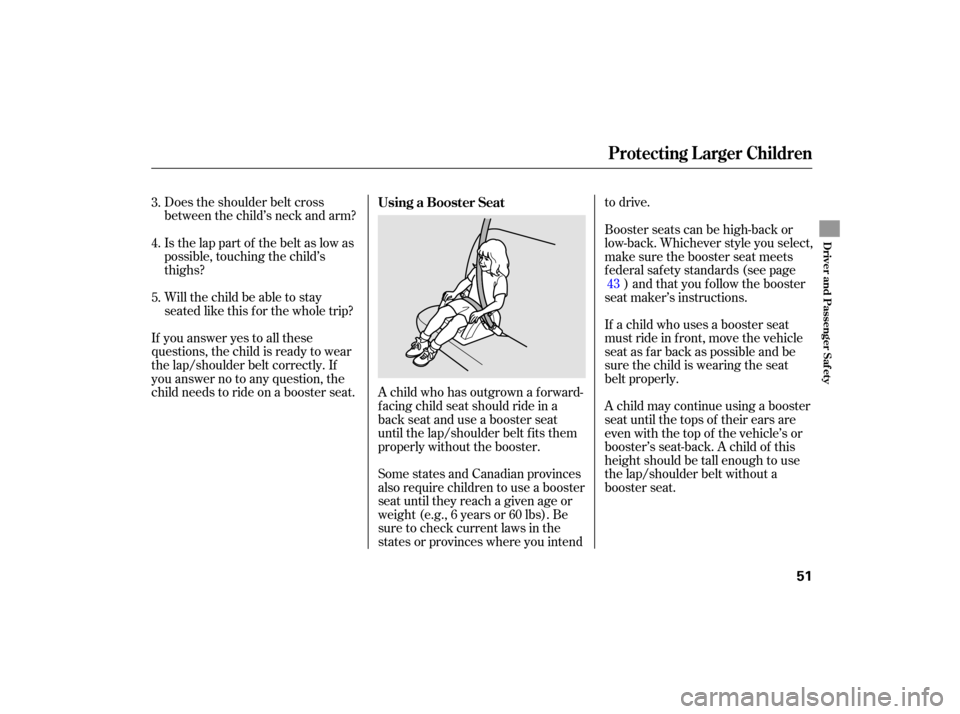
Does the shoulder belt cross
between the child’s neck and arm?
Is the lap part of the belt as low as
possible, touching the child’s
thighs?
Will the child be able to stay
seated like this f or the whole trip?
If you answer yes to all these
questions, the child is ready to wear
the lap/shoulder belt correctly. If
you answer no to any question, the
child needs to ride on a booster seat. A child who has outgrown a f orward- f acing child seat should ride in a
back seat and use a booster seat
until the lap/shoulder belt f its them
properly without the booster.
Some states and Canadian provinces
also require children to use a booster
seat until they reach a given age or
weight (e.g., 6 years or 60 lbs). Be
sure to check current laws in the
states or provinces where you intendto drive.
If a child who uses a booster seat
must ride in f ront, move the vehicle
seat as far back as possible and be
sure the child is wearing the seat
belt properly. Booster seats can be high-back or
low-back. Whichever style you select,
make sure the booster seat meets
f ederal saf ety standards (see page
) and that you f ollow the booster
seat maker’s instructions.
A child may continue using a booster
seat until the tops of their ears are
even with the top of the vehicle’s or
booster’s seat-back. A child of this
height should be tall enough to use
the lap/shoulder belt without a
booster seat.
4.
5. 3.
43
Using a Booster Seat
Protecting L arger Children
Driver and Passenger Saf ety
51
06/08/08 14:23:58 31SDR620_056
Page 55 of 287
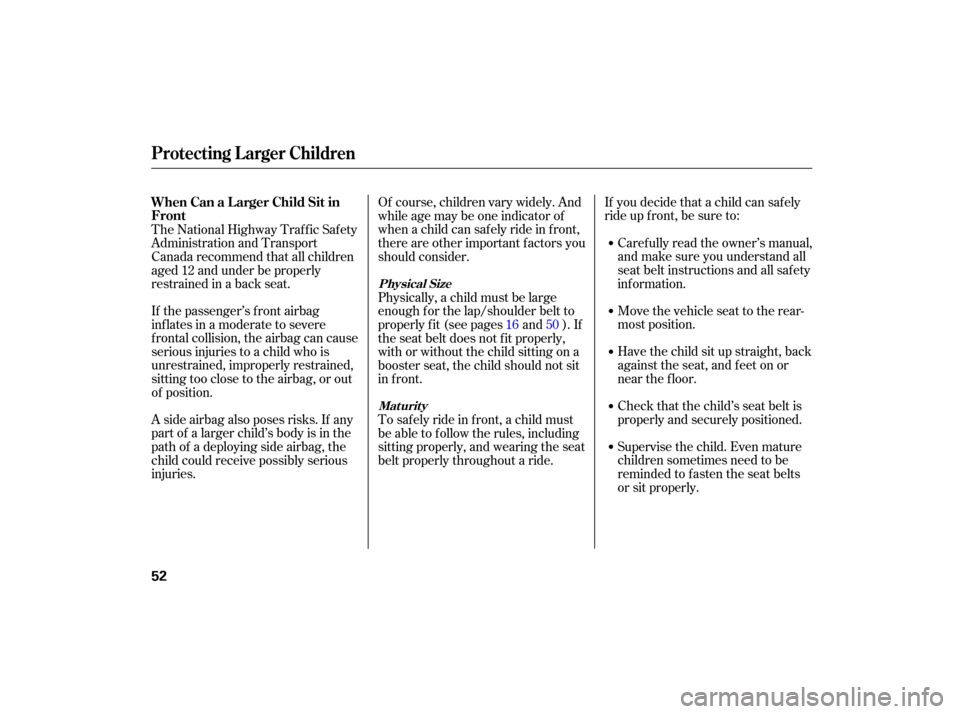
If you decide that a child can saf ely
ride up f ront, be sure to:Caref ully read the owner’s manual,
and make sure you understand all
seat belt instructions and all saf ety
inf ormation.
Move the vehicle seat to the rear-
most position.
Have the child sit up straight, back
against the seat, and feet on or
near the f loor.
Check that the child’s seat belt is
properly and securely positioned.
Supervise the child. Even mature
children sometimes need to be
reminded to f asten the seat belts
or sit properly.
Of course, children vary widely. And
while age may be one indicator of
when a child can saf ely ride in f ront,
there are other important f actors you
should consider.
If the passenger’s front airbag
inf lates in a moderate to severe
f rontal collision, the airbag can cause
serious injuries to a child who is
unrestrained, improperly restrained,
sitting too close to the airbag, or out
of position.
A side airbag also poses risks. If any
part of a larger child’s body is in the
path of a deploying side airbag, the
child could receive possibly serious
injuries. The National Highway Traffic Safety
Administration and Transport
Canada recommend that all children
aged 12 and under be properly
restrained in a back seat. Physically, a child must be large
enough f or the lap/shoulder belt to
properly f it (see pages and ). If
the seat belt does not f it properly,
with or without the child sitting on a
booster seat, the child should not sit
in f ront.
To saf ely ride in f ront, a child must
be able to f ollow the rules, including
sitting properly, and wearing the seat
belt properly throughout a ride.5016
Physical Size
Maturity
When Can a L arger Child Sit in
Front
Protecting L arger Children
52
06/08/08 14:24:12 31SDR620_057
Page 56 of 287
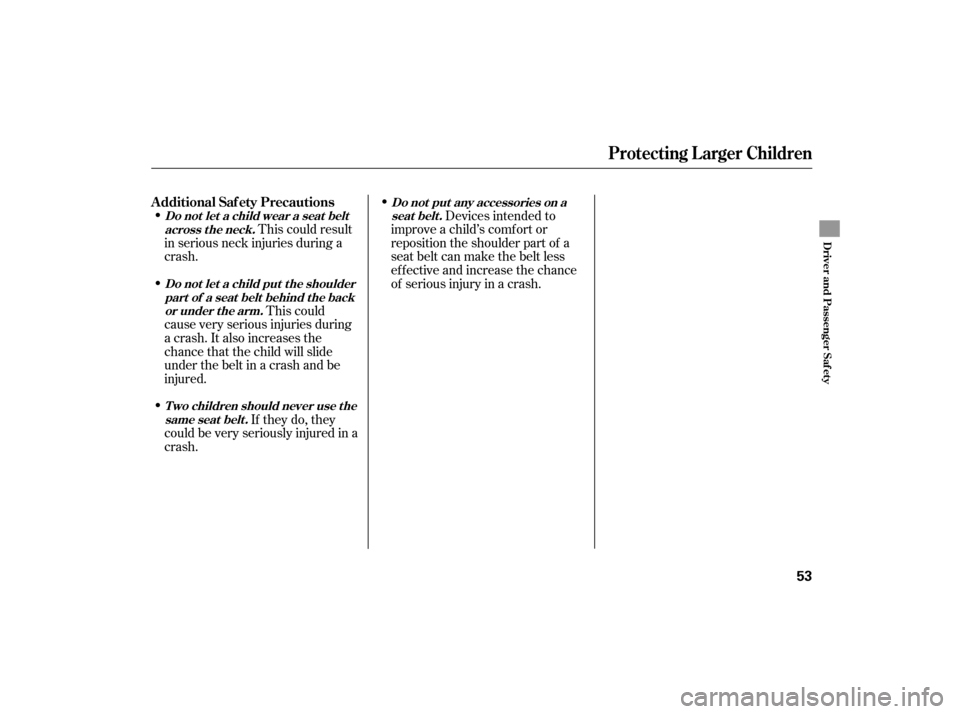
This could result
in serious neck injuries during a
crash. Devices intended to
improve a child’s comf ort or
reposition the shoulder part of a
seat belt can make the belt less
ef f ective and increase the chance
of serious injury in a crash.
This could
cause very serious injuries during
a crash. It also increases the
chance that the child will slide
under the belt in a crash and be
injured.
If they do, they
could be very seriously injured in a
crash.
Do not let a child wear a seat belt
across t he neck. Do not put any accessories on a
seat belt.
Do not let a child put the shoulder part of a seat belt behind t he backor under t he arm.
T wo children should never use thesame seat belt .
Additional Saf ety Precautions
Protecting L arger Children
Driver and Passenger Saf ety
53
06/08/08 14:24:19 31SDR620_058
Page 57 of 287
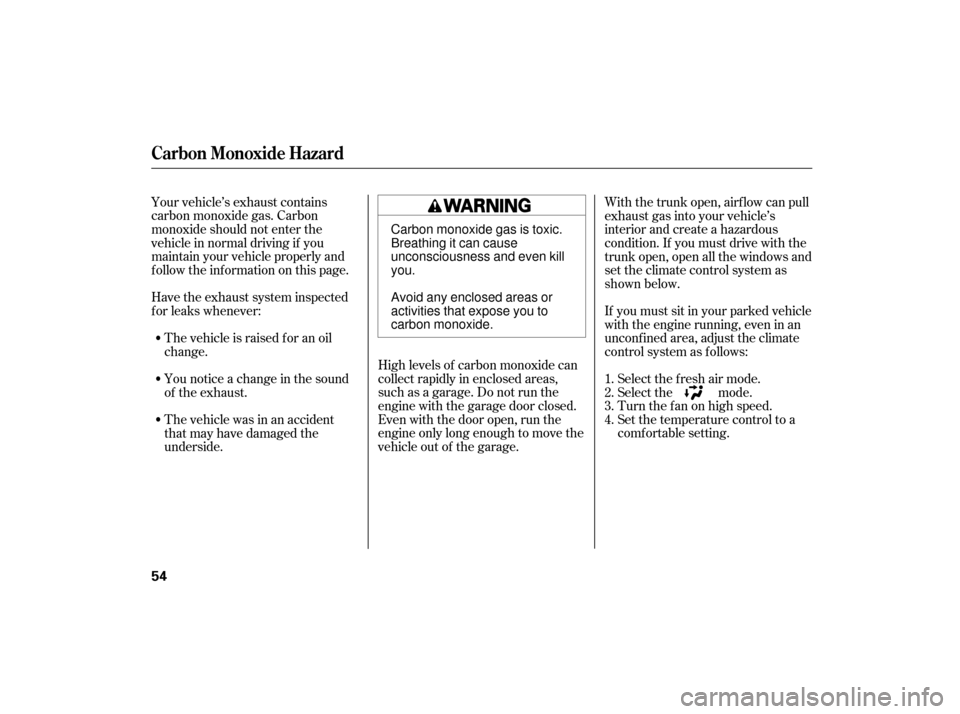
Your vehicle’s exhaust contains
carbon monoxide gas. Carbon
monoxide should not enter the
vehicle in normal driving if you
maintain your vehicle properly and
f ollow the inf ormation on this page.High levels of carbon monoxide can
collect rapidly in enclosed areas,
such as a garage. Do not run the
engine with the garage door closed.
Even with the door open, run the
engine only long enough to move the
vehicle out of the garage.
Have the exhaust system inspected
f or leaks whenever:
With the trunk open, airf low can pull
exhaust gas into your vehicle’s
interior and create a hazardous
condition. If you must drive with the
trunk open, open all the windows and
set the climate control system as
shown below.
If you must sit in your parked vehicle
with the engine running, even in an
unconfined area, adjust the climate
control system as f ollows:
Select the f resh air mode.
Select the mode.
Turn the f an on high speed.
Set the temperature control to a
comfortable setting.
The vehicle is raised f or an oil
change.
You notice a change in the sound
of the exhaust.
The vehicle was in an accident
that may have damaged the
underside.
1.
2.
3.
4.
Carbon Monoxide Hazard
54
Carbon monoxide gas is toxic.
Breathing it can cause
unconsciousness and even kill
you.
Avoid any enclosed areas or
activities that expose you to
carbon monoxide.
06/08/08 14:24:29 31SDR620_059
Page 58 of 287

These labels are in the locations
shown. They warn you of potential
hazards that could cause serious
injury or death. Read these labels
caref ully. If a label comes of f or
becomeshardtoread(exceptforthe
U.S. dashboard label which is
removed by the owner), contact your
dealer f or a replacement.
Canadian models
U.S. model
U.S. model Canadian model
U.S. model
U.S. model only
Canadian model Canadian model
U.S. model
Saf ety L abels
Driver and Passenger Saf ety
55
SUN VISOR
HOOD DOORJAMBS
RADIATOR
CAP
ENGINE COMPARTMENT
DASHBOARD
06/08/08 14:25:24 31SDR620_060
Page 59 of 287
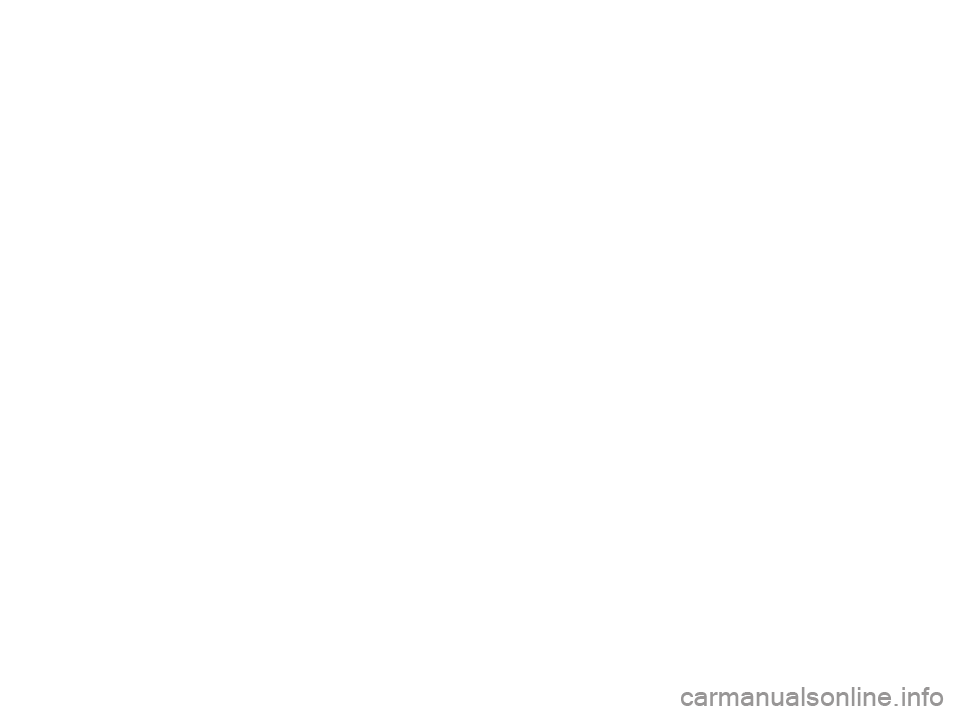
Page 60 of 287
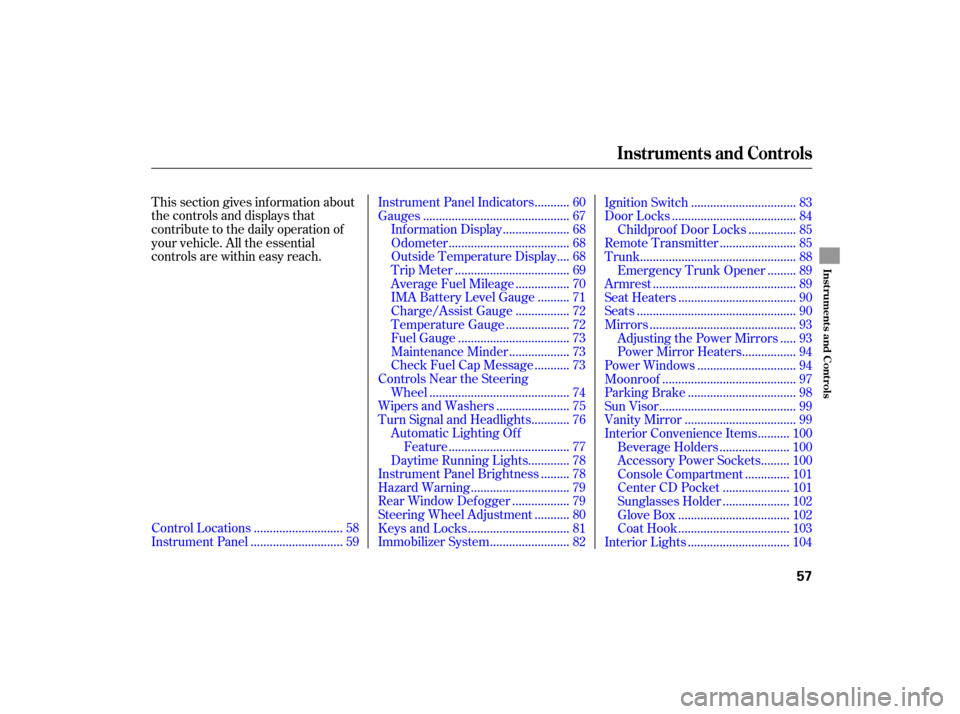
This section gives inf ormation about
the controls and displays that
contribute to the daily operation of
your vehicle. All the essential
controls are within easy reach.
...........................Control Locations . 58
............................Instrument Panel. 59
..........Instrument Panel Indicators . 60
.............................................Gauges. 67
....................Information Display . 68
.....................................Odometer. 68
...Outside Temperature Display . 68
...................................Trip Meter. 69
................Average Fuel Mileage . 70
.........IMA Battery Level Gauge . 71
................Charge/Assist Gauge . 72
...................Temperature Gauge . 72
..................................Fuel Gauge. 73
..................Maintenance Minder . 73
..........Check Fuel Cap Message . 73
Controls Near the Steering
...........................................Wheel. 74
......................Wipers and Washers. 75
...........Turn Signal and Headlights . 76
Automatic Lighting Off
.....................................Feature. 77
............Daytime Running Lights . 78
........Instrument Panel Brightness . 78
..............................Hazard Warning. 79
.................Rear Window Def ogger . 79
..........Steering Wheel Adjustment . 80
...............................Keys and Locks. 81
........................Immobilizer System. 82
................................Ignition Switch. 83
......................................Door Locks. 84
..............Childproof Door Locks . 85
.......................Remote Transmitter. 85
................................................Trunk. 88
........Emergency Trunk Opener . 89
............................................Armrest. 89
....................................Seat Heaters. 90
.................................................Seats. 90
.............................................Mirrors. 93
....Adjusting the Power Mirrors . 93
................Power Mirror Heaters . 94
..............................Power Windows. 94
.........................................Moonroof. 97
.................................Parking Brake. 98
..........................................Sun Visor. 99
..................................Vanity Mirror. 99
.........Interior Convenience Items . 100
.....................Beverage Holders. 100
........Accessory Power Sockets . 100
.............Console Compartment . 101
....................Center CD Pocket. 101
....................Sunglasses Holder. 102
..................................Glove Box. 102
..................................Coat Hook. 103
...............................Interior Lights. 104
Instruments and Controls
Inst rument s and Cont rols
57
06/08/08 14:25:32 31SDR620_062